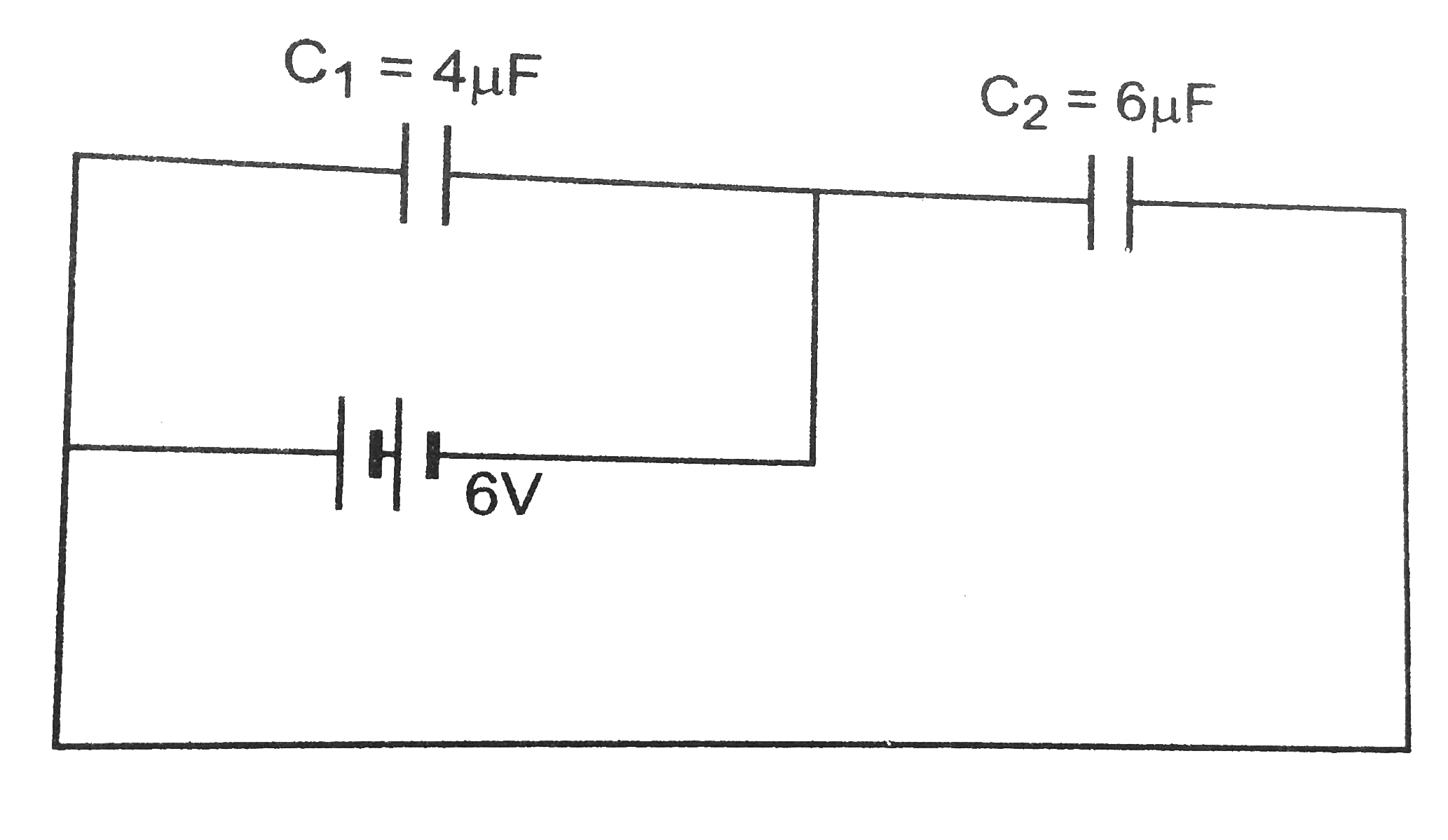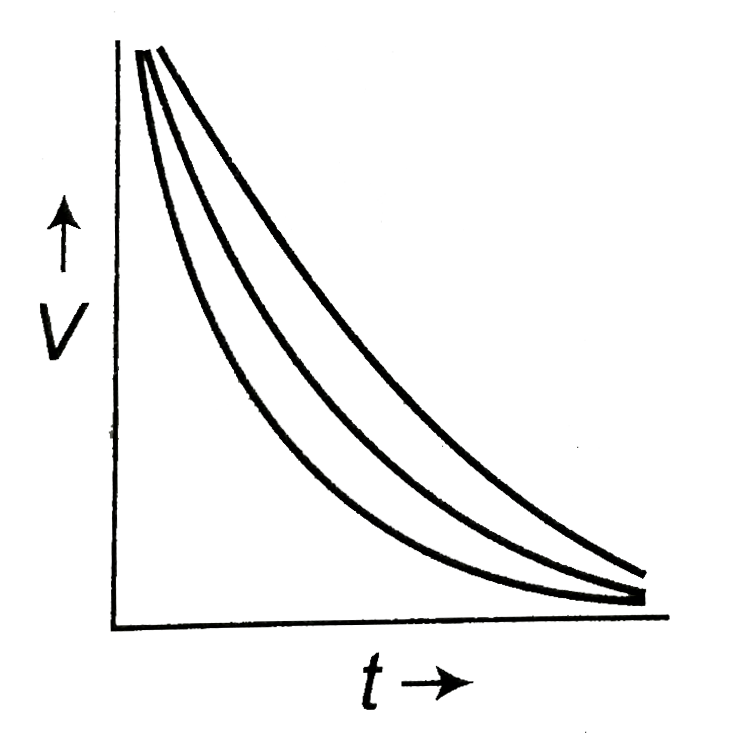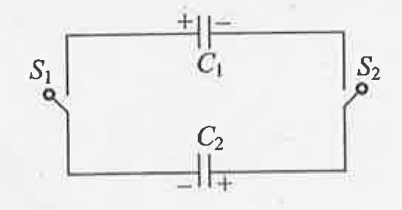Two capacitors C1andC2(C1>C2) are charged separtately to same potential. Now they are allowed to discharge through similar resistors. Initial rate of discharging will be
more for C1
more for C2
same for both
cannot say
The correct Answer is:C
Initial rate of discharging means initial current which is equal
to V/R where V is initial potential. Here V and R are the same for both.
Topper's Solved these Questions
- ELECTRIC CURRENT AND CIRCUITBOOK - CENGAGE PHYSICSCHAPTER - ELECTRIC CURRENT AND CIRCUITEXERCISE - Multiple Correct
16 Videos
- ELECTRIC CURRENT AND CIRCUITBOOK - CENGAGE PHYSICSCHAPTER - ELECTRIC CURRENT AND CIRCUITEXERCISE - Comprehension
35 Videos
- ELECTRIC CURRENT AND CIRCUITBOOK - CENGAGE PHYSICSCHAPTER - ELECTRIC CURRENT AND CIRCUITEXERCISE - Subjective
29 Videos
- ELECTRIC CURRENT & CIRCUITSBOOK - CENGAGE PHYSICSCHAPTER - ELECTRIC CURRENT & CIRCUITSEXERCISE - Kirchhoff s law and simple circuits
15 Videos
- ELECTRIC FLUX AND GAUSS LAWBOOK - CENGAGE PHYSICSCHAPTER - ELECTRIC FLUX AND GAUSS LAWEXERCISE - MCQ s
38 Videos
Similar Questions
Two capacitors C1 and C2 are connected to a battery of 6V as shown in Fig. Find the charge on each capacitor.

View SolutionA capacitor C1 of capacitance 1μF and a capacitor C2 of capacitance 2μF are separately charged by a common battery for a long time. The two capacitors are then separately discharged through equal resistors. Both the discharge circuits are connected at t=0.
View Solution
Knowledge Check
Capacitors C1=1μF and C2=2μF are separately charged from the same battery. They are allowed to discharge separately through equal resistors
AThe currents in the two dicharging circuits at t=0 is zeroBThe currents in the two discharging circuits at t=0 are equal but not zeroCThe currents in the two discharging circuits at t=0 are unequalDC1 loses 50% of its initial charge sooner than C20 loses 50% of its initial charge.A capacitor is charged to a certain potential and then allowed to discharge through a resistance R. The ratio of charge on the capacitor to current in the circuit
Achanges with timeBdoes not change with time and it is equal to time constant of circuitCdoes not change with time, but not equal to time constant of circuitDmay or may not change depending upon the charge given to the capacitorTwo capacitors C1=2mFandC2=8mF are seperately charged from the same battery. These two capacitors are then allowed to discharge separately through resistors of same resistance with a switch in series which are kept open initially. Both switches are closed at t = 0.
ACurrent at t = 0 will be zero in both the capacitors.BAt t = 0 current in C1 will be 4 times the current in C2.CAt t = 0 current in both the capacitors will be the sameDCapacitor C1 loses 25% of its initial charge in lesser time than capacitor C2.
Two identical capcitors A and B are charged to the same potential and then made to discharge through resistance RA and RB respectively with RA>RB
View Solutionthree identical capacitor, A,BandC are charged to the same potential and then made to discharge through three resistance RA>RB>RC. Their potential differnece (V) are plotted against time t, giving the curves 1,2,and3. Choose the incorrect option.

View SolutionTwo capacitors C1 and C2 are charged to same potential V, but with opposite polarity as shown in the figure. The switches S1 and S2 are then closed

View SolutionCapacitor C1 of the capacitance 1μF and another capacitor C2 of capacitance 2μF are separately charged fully by a common battery.The two capacitors are then separately allowed to discharge through equal resistors at time t=0.
View SolutionTwo capacitors C1andC2 are charged to the same potential V, but with opposite polarity as shown in the figure. The switch S1andS2 are then closed.

View Solution